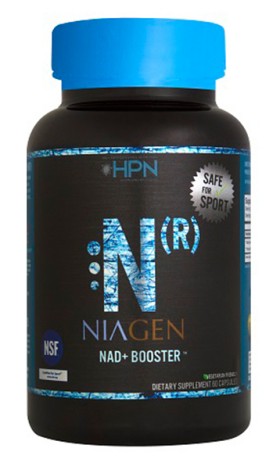
Pocket Guide to Improving Your Fat Loss Results
Most people think of fat as something that is only burned while dieting, or stored while eating excessive amounts of food. The truth is, this couldn't be further from the truth.
The body is in a constant state of flux. We are continually both storing and releasing fatty acids. The sum total of fat loss, fat gain or maintenance is a result of whether your net fat storage is greater than, less than or equal to your fat burn.
To make this easier to understand I have an analogy for you. Consider your bank account. You don't just make money or spend money. Money is not just deposited or withdrawn from your account in some mutually exclusive way. Both deposits and withdrawals can happen at any given time.
When you earn money you make deposits. As you send money you make withdrawals. If your income (storage) is greater than your spending (release), you make money. If they are equal you break even. You can accrue more funds by either making more money, or by reducing your expenses.
Now take this analogy and apply it to your body fat bank account. Your goal is to empty that sucker. This means that your withdrawals (fat burn) must be greater than your deposits (fat storage). Of course in this scenario, you can work towards emptying your account by increasing withdrawals (fat burning) or by decreasing deposits (fat storage); but how do we make these things happen?
You can use this number to plan your calorie intake and activity levels. This will allow you to consistently burn more calories than you consume.

[imagemap id="12753"]
A) Intense weight and cardiovascular training
Both intense resistance training and cardiovascular activity has been shown to increase protein synthesis, promote natural hormone balance, and stabilize both blood sugar and insulin levels. These are all key factors to controlling the fat storage side of fat loss.
B) Controlling insulin levels through nutrition intake and timing
Insulin is known as the ?storage hormone.? This powerful hormone can be used to our advantage, but it can simultaneously be a detriment to the fat loss process if its impact and functionality in our body is not respected.
 N(r) is an industry break-through that is changing the world of natural supplementation. N(r) is the ONLY NAD+ booster. BUY NOW.[/caption]
N(r) is an industry break-through that is changing the world of natural supplementation. N(r) is the ONLY NAD+ booster. BUY NOW.[/caption]
There have been many products touted to help prevent fat storage, but they all lacked the empirical or research-based evidence to demonstrate their effectiveness. My company HPN has recently brought to market a product that actually works.
HPN M(6) contains the patented and trademarked cyanidin-3-glucoside, a natural extract of black rice that has been proven in published university research to reduce fatty acid storage in the human body. When subjects in the Kwon study (referenced below) were put on high fat, high calorie diets with and without cyanidin-3-glucoside, the C3G group gained nearly 30% LESS weight.
The study performed by Tsuda demonstrated that the effects of C3G come from its interaction with our genetic expression for enzymes affecting triacylglycerol synthesis and fatty acid storage.
Check out the research below on the patented cyanidin-3-glucoside used exclusively in HPN M(6). don't be fooled by products that do not use the research backed ProC3G, they are unverified and lower grade materials that cannot be stated to have the same effects as our product.
Bringing a supplement such as M(6) into your stack can help address the fat storage side of the equation, aka ?The Other Side of Fat Loss.? Along with a controlled nutrition plan and regular exercise, this can help expedite fat loss and get you moving towards the leaner and stronger physique you are after.
2) Tsuda; Dietary Cyanidin 3-O--D-Glucoside-Rich Purple Corn Color Prevents Obesity and Ameliorates Hyperglycemia; The Journal of Nutrition (2003)
3) Wedick; Dietary flavonoid intakes and risk of type 2 diabetes in US men and women; American Journal of Clinical Nutrition (2012) 95:925-933.
4) Cassidy; Habitual intake of flavonoid subclasses and incident hypertension in adults; American Journal of Clinical Nutrition (2011) 93:338-347.
5) Qin; Anthocyanin supplementation improves serum LDL- and HDL-cholesterol concentrations associated with the inhibition of cholesteryl ester transfer protein in dyslipidemic subjects; American Journal of Clinical Nutrition (2009) 90:485-492.
6) Zhu; Purified Anthocyanin Supplementation Improves Endothelial Function via NO-cGMP Activation in Hypercholesterolemic Individuals; Clinical Chemistry (2011) 57:1524-1533.
The body is in a constant state of flux. We are continually both storing and releasing fatty acids. The sum total of fat loss, fat gain or maintenance is a result of whether your net fat storage is greater than, less than or equal to your fat burn.
To make this easier to understand I have an analogy for you. Consider your bank account. You don't just make money or spend money. Money is not just deposited or withdrawn from your account in some mutually exclusive way. Both deposits and withdrawals can happen at any given time.
When you earn money you make deposits. As you send money you make withdrawals. If your income (storage) is greater than your spending (release), you make money. If they are equal you break even. You can accrue more funds by either making more money, or by reducing your expenses.
Now take this analogy and apply it to your body fat bank account. Your goal is to empty that sucker. This means that your withdrawals (fat burn) must be greater than your deposits (fat storage). Of course in this scenario, you can work towards emptying your account by increasing withdrawals (fat burning) or by decreasing deposits (fat storage); but how do we make these things happen?
How do you make fat burning happen?
That's the easy part. The surest and most reliable way to ensure fat loss starts with a somewhat accurate estimate of your current metabolic rate.You can use this number to plan your calorie intake and activity levels. This will allow you to consistently burn more calories than you consume.

Both resistance training and cardiovascular activity has been shown to increase protein synthesis, promote natural hormone balance and stabilize blood sugar and insulin levels.
How can you figure out your base metabolic rate?
You will need to know the following:- Male or female?
- Weight in pounds?
- Height in inches?
- Age in years?
BMR Calculation for Women: 655 + (4.35 × weight in pounds) + (4.7 × height in inches) ? (4.7 × age in years)
BMR Calculation for Men: 66 + (6.23 × weight in pounds) + (12.7 × height in inches) ? (6.76 × age in years)
With this Base BMR figure, you'll want to adjust for your activity level, which you can do with the following multiplier:- Little to no exercise: BMR x 1.2
- Light exercise (1 to 3 days per week): BMR x1.375
- Moderate exercise (3 to 5 days per week): BMR x 1.55
- Heavy exercise (6 to 7 days per week): BMR x 1.725
- Very heavy exercise (intense workouts twice per day): BMR x 1.9
[imagemap id="12753"]
The Drop 6 Stack, consisting of MTS Drop Factor, EthiTech Yohimbine and HPN M(6), is the ultimate fat blasting powerhouse. CLICK HERE to buy now.
Supplements that help release and burn fat
- Thermogenics containing ingredients such as caffeine, forskolin, cayenne pepper, and synephrine. MTS Drop Factor is the top choice here.
- Yohimbine from EthiTech
- Omega 3 Fatty Acids. HPN N(4) provides an ultra premium grade.
- L-Carnitine
- N(r). HPN N(r) is the obvious choice here.
How do you slow down fat storage from happening?
The most potent lifestyle methods of impacting fat storage patterns are:A) Intense weight and cardiovascular training
Both intense resistance training and cardiovascular activity has been shown to increase protein synthesis, promote natural hormone balance, and stabilize both blood sugar and insulin levels. These are all key factors to controlling the fat storage side of fat loss.
B) Controlling insulin levels through nutrition intake and timing
Insulin is known as the ?storage hormone.? This powerful hormone can be used to our advantage, but it can simultaneously be a detriment to the fat loss process if its impact and functionality in our body is not respected.
- Eat Meals that always contain a protein source.
- Avoid eating meals that are over-sized to the point where you feel lethargic or sluggish. If you do feel this way after eating, it could be a sign that you have overeaten.
- Avoid consuming meals that contain large amounts of both carbohydrates and fats. Utilize carbohydrate rich meals before and after training to meet energy needs and support intense training, but spread your needed dietary fat intake more evenly through the day or concentrate it in meals where carbohydrate content is lower.
Supplements that help prevent fat storage
[caption id="attachment_12744" align="alignright" width="280"] N(r) is an industry break-through that is changing the world of natural supplementation. N(r) is the ONLY NAD+ booster. BUY NOW.[/caption]
N(r) is an industry break-through that is changing the world of natural supplementation. N(r) is the ONLY NAD+ booster. BUY NOW.[/caption]There have been many products touted to help prevent fat storage, but they all lacked the empirical or research-based evidence to demonstrate their effectiveness. My company HPN has recently brought to market a product that actually works.
HPN M(6) contains the patented and trademarked cyanidin-3-glucoside, a natural extract of black rice that has been proven in published university research to reduce fatty acid storage in the human body. When subjects in the Kwon study (referenced below) were put on high fat, high calorie diets with and without cyanidin-3-glucoside, the C3G group gained nearly 30% LESS weight.
The study performed by Tsuda demonstrated that the effects of C3G come from its interaction with our genetic expression for enzymes affecting triacylglycerol synthesis and fatty acid storage.
Check out the research below on the patented cyanidin-3-glucoside used exclusively in HPN M(6). don't be fooled by products that do not use the research backed ProC3G, they are unverified and lower grade materials that cannot be stated to have the same effects as our product.
Bringing a supplement such as M(6) into your stack can help address the fat storage side of the equation, aka ?The Other Side of Fat Loss.? Along with a controlled nutrition plan and regular exercise, this can help expedite fat loss and get you moving towards the leaner and stronger physique you are after.
References
1) Kwon; Anti-Obesity and Hypolipidemic Effects of Black Soybean Anthocyanins; Journal of Medicinal Food (2007) 10:552-556.2) Tsuda; Dietary Cyanidin 3-O--D-Glucoside-Rich Purple Corn Color Prevents Obesity and Ameliorates Hyperglycemia; The Journal of Nutrition (2003)
3) Wedick; Dietary flavonoid intakes and risk of type 2 diabetes in US men and women; American Journal of Clinical Nutrition (2012) 95:925-933.
4) Cassidy; Habitual intake of flavonoid subclasses and incident hypertension in adults; American Journal of Clinical Nutrition (2011) 93:338-347.
5) Qin; Anthocyanin supplementation improves serum LDL- and HDL-cholesterol concentrations associated with the inhibition of cholesteryl ester transfer protein in dyslipidemic subjects; American Journal of Clinical Nutrition (2009) 90:485-492.
6) Zhu; Purified Anthocyanin Supplementation Improves Endothelial Function via NO-cGMP Activation in Hypercholesterolemic Individuals; Clinical Chemistry (2011) 57:1524-1533.

Leave a comment